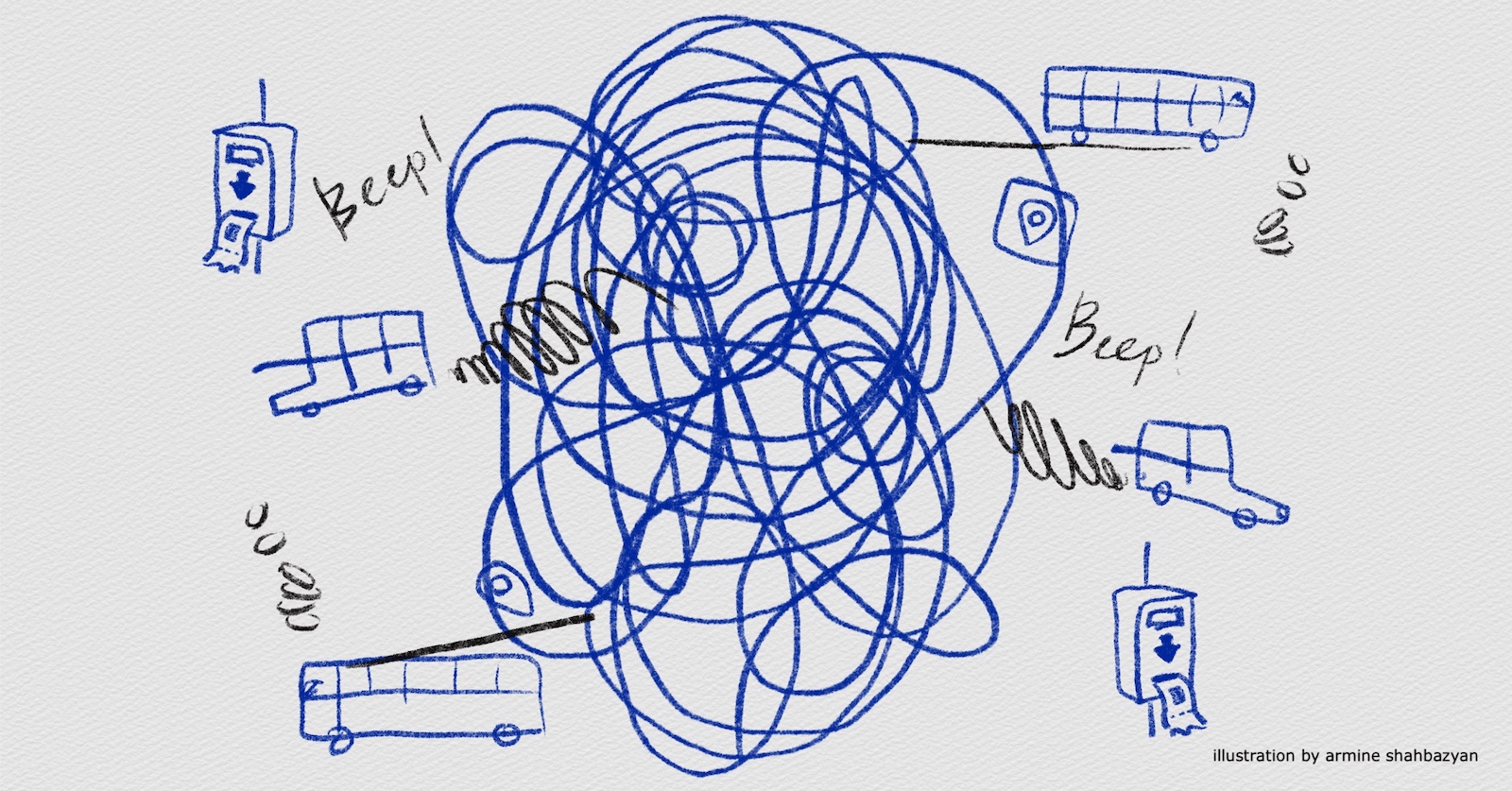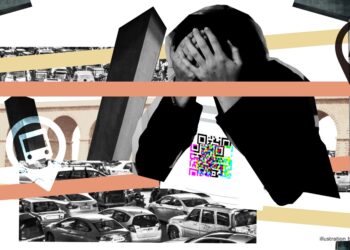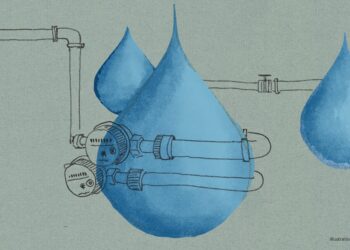
Listen to the article.
In Armenia, the sluggish pace of reforms is frustratingly slow. Delays pile up, and with poor communication from the authorities, the public is left wondering: are these setbacks unavoidable, or is something else at play?
Following the 2018 Velvet Revolution, the new administration promised sweeping institutional reforms. Despite significant challenges, including COVID-19, the 2020 Artsakh War, attacks on Armenia’s sovereign territory, and the ethnic cleansing of Nagorno-Karabakh, the government has launched initiatives to reform the police, military, healthcare, judiciary and education sectors.
While many of these reforms are ongoing and their outcomes remain uncertain, they share a common weakness: inadequate vision and sloppy development and planning. The government sets ambitious goals but often rushes decisions without a clear implementation strategy, only to backtrack or revise them when flaws become apparent.
The Yerevan transportation reform, recently under intense scrutiny, exemplifies this pattern. We’ve analyzed its development from the beginning of its inception through four different city administrations.
The Four Mayors: From Taron Margaryan to Tigran Avinyan
Taron Margaryan (2011-2018)
After six years in office, Republican Party Mayor Taron Margaryan finally launched the long-overdue transportation reform in 2017. Despite campaign promises in the past to improve public transit, his tenure saw little to no progress until his final year in office. On December 29, 2017, the Yerevan municipality released a year-end report, stating that “the process of Yerevan’s public transportation reforms entered the practical phase.” The report highlighted “unprecedented research and studies” on passenger flows, consumer demand, and household transportation needs. The British consultancy firm WYG was commissioned to develop a new public transportation route network for the city, and by year’s end, they had submitted their proposal.
The Yerevan public transport reform initiated under Margaryan was set to continue into 2018. However, the Velvet Revolution and the resulting change in leadership stalled the process, leaving its future uncertain.
Hayk Marutyan (2018-2021)
The My Step alliance, formed by Prime Minister Nikol Pashinyan’s team, nominated actor and comedian Hayk Marutyan as their candidate for the September 2018 Yerevan municipal elections. While best known for his entertainment career, Marutyan was also a prominent political activist. He played a notable role in the 2013 “No to 150 drams” protests against a proposed transportation fare hike. When the municipality attempted to raise fares from 100 to 150 drams, young activists organized demonstrations, arguing that the increase was unjustified given the aging vehicle fleet. Marutyan actively supported the cause, even personally driving protesters who boycotted the city’s minibuses.
In October 2018, Hayk Marutyan won the mayoral election. Having made public transportation reform central to his campaign, he established it as a key priority upon taking office.
Marutyan and his team chose to continue with the reform package their predecessors had developed. Throughout 2019, he consistently maintained that implementing a new transportation system in Yerevan would require around two years.
In December 2019, more than a year into his tenure, Marutyan announced that the municipality had finalized the design of the new transportation network and secured government approval for its financial implementation model. He pledged that City Hall would shift from planning to execution in the coming year, assuring Yerevan residents that visible improvements would take shape by 2021-2022.
Between 2019 and 2020, the city purchased 100 Russian-made minibuses. However, as a municipality representative told EVN Report in July 2022, the COVID-19 outbreak and the 2020 Artsakh War delayed the reform.
In 2021, the city placed an order for its first batch of eight-meter-long buses from a Chinese manufacturer. By the end of the year, 211 of these new buses had arrived in Yerevan—coinciding with the ouster of Mayor Hayk Marutyan. Critics accused Marutyan of stalling transportation reforms, though his removal in December 2021 by the ruling Civil Contract party was widely seen as politically motivated. Reports indicated that his growing rift with Prime Minister Pashinyan’s government, rather than policy failures, was the primary reason for his dismissal.
Hrachya Sargsyan (2021-2023)
Hrachya Sargsyan, who was First Deputy Mayor, took over after Marutyan’s departure, served as acting mayor of Yerevan until the September 2023 municipal elections. During his tenure, the municipality continued implementing Yerevan’s public transformation reforms. Sargsyan’s leadership became complicated when Tigran Avinyan, appointed deputy mayor in September 2022, began gaining prominence, particularly in the lead-up to the 2023 municipal elections. Avinyan increasingly overshadowed Sargsyan, frequently appearing at public events to showcase the new buses and discuss reform initiatives.
In June 2022, six months after taking office, Sargsyan announced that despite Armenia’s recent challenges, the reforms would be 70% complete by the end of 2023, with a fully updated public transport system expected by 2025.
Under Sargsyan, the municipality continued purchasing new buses as a key component of the transportation reform. In May 2022, the municipality signed a purchase order for 87 German-made, 12-meter-long buses (the more than 500 remaining buses are Chinese-made, measuring 8.6-meter in length). After two years of preparation, the first batch of 44 buses arrived in Yerevan in January 2023. While the municipality planned to integrate them into the fleet by March, the first batch was not dispatched onto the streets until April 15.
Between June and September 2023, the municipality replaced 363 minibuses––commonly known as marshrutkas––with larger ones. These minibuses had earned a poor reputation in Yerevan for their size, discomfort, and outdated condition. They were prone to breakdowns and often forced passengers to travel in cramped conditions.
During this time period, the municipality also acquired 30 new trolleybuses.
In mid-April 2022, the municipality announced that it had initiated steps to introduce a new unified ticketing system, with plans to complete it by year’s end. In July 2022, a municipality representative told EVN Report that the system would launch within two to three months.
By January 2023, nearly a year after the project’s start, the municipality announced that it had selected a company to manage the implementation, which would encompass both buses and the metro.
Nine months later, on September 15, 2023––just two days before the Yerevan municipal elections––the municipality announced that the pilot project for the unified ticketing system was complete and the main program had officially launched. The newly purchased 12-meter buses were equipped with validators and special devices for the system. The municipality planned to extend this system to trolleybuses and the metro, with implementation for all other newly imported buses expected by year’s end.
Despite the municipality’s initial promise of multiple payment options, only coin payments and QR code tickets were available through December 2024.
During the implementation of the unified payment system, coin machines were installed in new buses as a temporary measure to regulate fare collection and minimize driver-passenger interaction. These machines initially accepted only 100-dram coins, requiring drivers to carry change for passengers. Despite this arrangement, passengers bypassed the machines and continued paying drivers directly, which undermined the municipality’s efforts to improve transparency.
In response, the municipality upgraded some buses with coin machines that could provide change, but passengers still avoided using them. Officials consistently stressed that these machines were merely an interim solution until the unified ticketing system’s complete rollout.
City Hall told EVN Report that while 620 coin machines were purchased at a cost of about $250,000, they were used by only a small number of passengers. When asked about tracking the machines’ effectiveness in improving fare transparency, the municipality stated that from November 1 to December 31, 2024, all passengers—except those eligible for free travel—paid exclusively through coin-operated devices. However, they failed to assess whether the system achieved its intended purpose.
The machines came into use in November 2024, when the municipality limited payment options to either 100-dram coins or QR codes in preparation for the unified ticketing system’s full rollout in January 2025. The coin machines were operational for just two months before being locked and removed from buses in January.
Tigran Avinyan (2023-Present)
Tigran Avinyan formally assumed office as Yerevan’s mayor in October 2023. During his tenure, key transportation reforms were implemented, including the unified ticketing system and dedicated bus lanes, however, his administration faced significant criticism.
Two months after taking office, the municipality announced that ticketing devices had already been installed on approximately 660 vehicles in Yerevan’s public transport network.
While the municipality had hinted at fare increases since the beginning of Yerevan’s transportation reforms, the discussion became concrete on February 6, 2024, when the municipality proposed new fare packages. The plan drew strong criticism for its high costs and limited number of rides per time period. The proposal outlined three options: a one-month pass for 11,000 AMD (60 rides), a 90-day pass for 25,000 AMD (180 rides), and an annual pass for 110,000 AMD (1,000 rides).
The proposal, initially scheduled for discussion on February 13, was removed from the Yerevan City Council agenda for further review. In March, the municipality approved the new fare system with a planned September implementation. The revised fare structure introduced three payment options––monthly, quarterly, and annual passes––with different rates for physical and digital payments. Physical passes were set at 9,000 AMD monthly, 24,000 AMD quarterly, and 90,000 AMD annually. Digital payments offered a slight discount at 8,800 AMD monthly, 23,600 AMD quarterly, and 88,000 AMD annually.
The implementation was first postponed to January 1, 2025, to coincide with the unified ticketing system launch and the new bus arrivals. Subsequently, the municipality pushed the fare increases to February 1. According to Municipality spokesperson Hayk Kostanyan, the decision aimed to ensure a smooth transition to the new system.
Just three days before the deadline, the municipality backtracked once more. On January 28, Avinyan announced that while the previously agreed fare packages would remain in place, a single ride would now cost 150 AMD. Although the municipality insisted this was an additional fare option rather than a replacement for the 300 AMD fare, the lower price effectively became the default.
The decision came amid mounting public protests against the fare increases. Some passengers refused to pay entirely, while others attempted to pay 100 drams in coins—an impossible task since the buses’ coin machines had been locked.
Although commuters in Yerevan have since adapted to the changes and the unified ticketing system is functioning with occasional issues, the implementation of the ticketing system and the introduction of the bus fares was not smooth.
On March 17, the municipality announced that, from the beginning of the year until March 10, 75% of commuters used QR codes, 16% used bank cards, and 9% used transport cards.
Explaining the Issues
Despite the full implementation of Yerevan’s unified ticketing system, payment issues persist with bank cards, QR codes and MyFare bus cards.
Sargis Manukyan, director of the Technologies Management Center at the municipality, told EVN Report that the system is still in its adaptation phase, with ongoing issue resolution. He explained that the implementation followed three planned phases: pilot, partial deployment, and full rollout, adding that all functional features are now operational.
With 400,000 daily users and multiple integrations linking government and banking databases, some issues were expected. Manukyan emphasized that there are no system-wide problems, only isolated cases that the municipality addresses daily. Most bank card payment failures result from insufficient funds, QR code errors stem from reused codes, and MyFare card issues are due to empty balances.
Manukyan also explained why TelCell Wallet was chosen as the intermediary for fare collection. Based on international best practices and WYG’s consultancy recommendations, the city needed a financial intermediary, as direct transfers into the municipal budget were not feasible. Globally, similar systems operate through financial intermediaries like Visa, where transaction fees are a key incentive.
To prevent these fees from burdening the city’s budget, officials spent six months in 2021 negotiating alternatives with banks and financial institutions. A competitive process followed, and TelCell won the bid, agreeing to invest in the system in exchange for expanding its market share. According to Manukyan, TelCell’s proposal met international standards and ensured compatibility with multiple payment methods, including bank cards and QR codes.
Reforms Are Still Incomplete
The New Route Network
Despite Mayor Hrachya Sargsyan’s promise to complete the reforms by 2025, they remain largely unfinished. The municipality still needs to acquire 250 more 18-meter-long electric buses to reach its target of 850.The planned redesign of Yerevan’s public transportation network is on hold until all buses are purchased.
Vazgen Harutyunyan from the municipality’s transportation department told EVN Report that negotiations are underway to secure funding. “If successful, we can then determine the timeline for the tenders,” Harutyunyan said, noting that discussions with various financial organizations are ongoing.
Designated Bus Lanes
The Yerevan Municipality plans to connect all 12 administrative districts of the capital with dedicated bus lanes. The city has already established lanes on Abovyan, Moskovyan, Isahakyan and Saralanj streets, as well as on Gai and Mashtots avenues—ensuring buses stay on schedule. According to municipal reports, the dedicated lanes have not created additional problems, and the flow of traffic continues to improve.
A unified corridor connecting several administrative districts to ensure smooth public transit flow will run from the Kentron district toward Arshakunyats, Garegin Nzhdeh and Bagratunyats streets. Discussions are also underway to connect the Nor Nork district to Arabkir and extend access to Malatia-Sebastia.
Dedicated bus lanes will be implemented on several streets this year.
Electronic Timetables
According to Harutyunyan, work is underway to install electronic timetables at bus stops. In the meantime the municipality has implemented an interim solution––commuters can track the bus arrivals using the Yandex app.
Yerevan’s transportation reform, which began in 2017, is a stark example of short-sighted and underdeveloped strategic planning. While any reform process is bound to face complexities and challenges, it highlights the pressing need for strong leadership, greater accountability, and clearly defined strategies to ensure that the reform ultimately fulfills its goal: benefiting the public.
Also see
Law & Society
Reservoirs: Key to Armenia’s Water Security Amid Climate Change
Armenia faces mounting water security challenges as climate change intensifies floods and droughts. Reservoirs can play a pivotal role in managing these risks, ensuring water availability and supporting sustainable development through improved storage, infrastructure, and strategic planning initiatives. Hranoush Dermoyan explains.
Read moreMotherhood Behind Bars
Exploring the lives of incarcerated mothers at Armenia's Abovyan Penitentiary, Astghik Karapetyan delves into the challenges of raising children in confinement, the impact on maternal bonds, and the institutional efforts to balance rehabilitation with the children’s best interests.
Read moreNew Law on Higher Education: Meaningful Reform or Top-Down Policy?
A new Draft Law on Higher Education and Science has ignited public debate in Armenia. While introducing necessary reforms, experts fear certain amendments could threaten the core principles of the higher education system, including academic autonomy, regional equity and free competition.
Read moreAbundance of Both Water and Mismanagement
Armenia faces growing challenges in managing its water resources. Lake Sevan, a crucial water source, is being overused for irrigation, raising concerns about long-term sustainability. Mariam Tashchyan explores the factors behind Armenia’s water crisis.
Read moreArmenia as a Refuge: Who’s Seeking Asylum?
In recent years, there has been an unprecedented increase in the number of asylum seekers in Armenia. Arshaluys Barseghyan looks into what accounts for this trend, which countries Armenia receives the most applications from, and how many are accepted.
Read moreWater and Sanitation Crisis in Armenian Schools
Armenian schools face a severe water and sanitation crisis, worsened by a rising number of refugees. Joya Lahoud examines the impact on health, educational equality, rights, and inclusivity, highlighting the urgent need for comprehensive solutions and improved infrastructure.
Read moreEssential and Ongoing Steps Toward Legal Reform
Astghik Karapetyan addresses the process being implemented to ensure the continuity of judicial reforms, scrutinizing the implications of revamped qualifications for judges and examining challenges surrounding judicial conduct.
Read more











